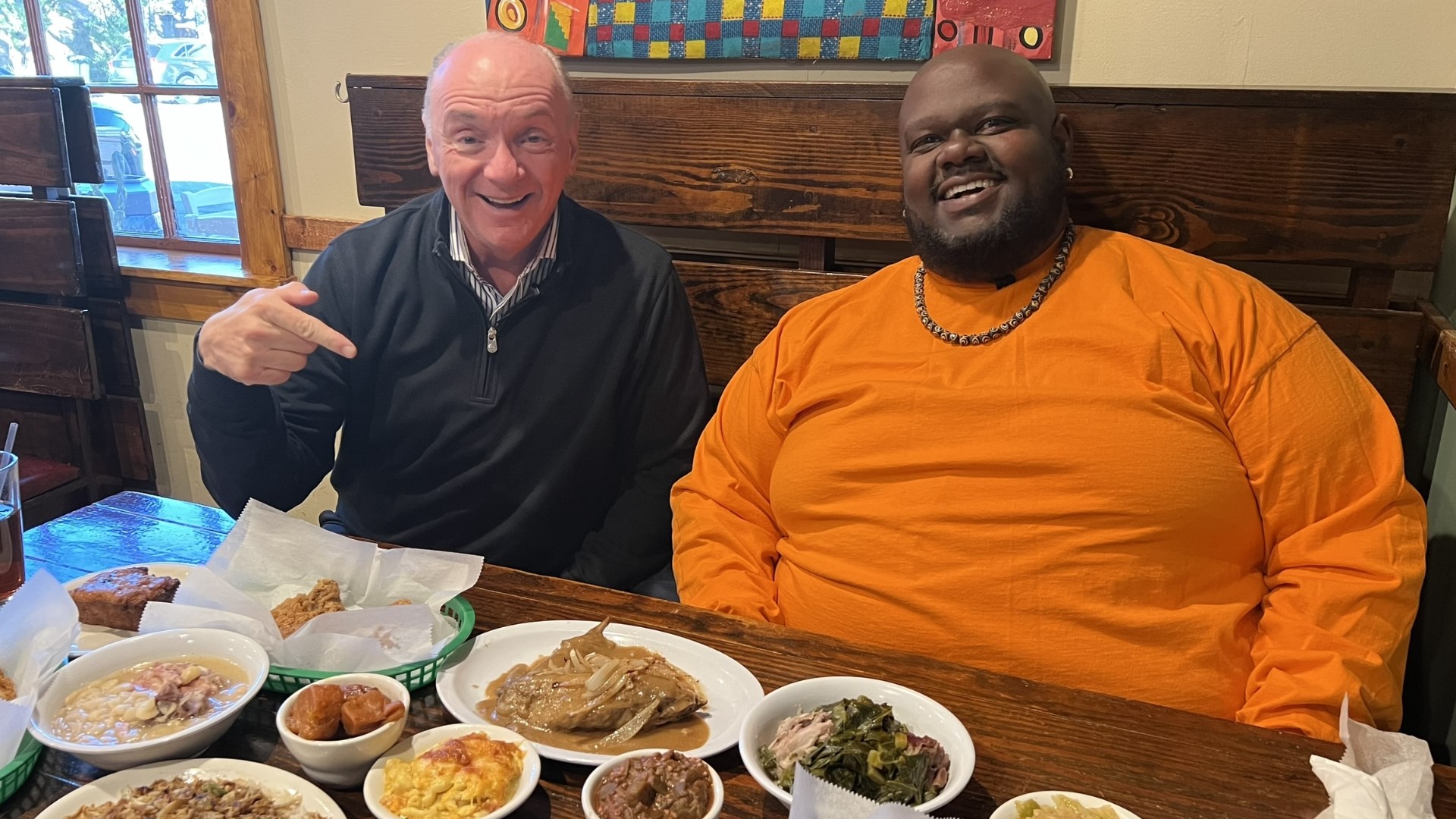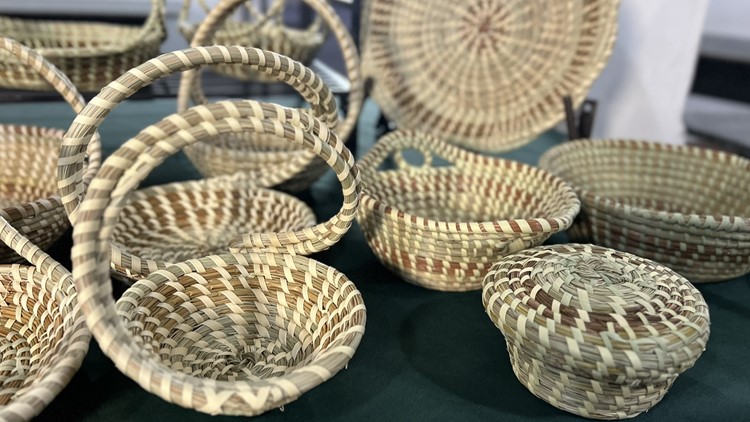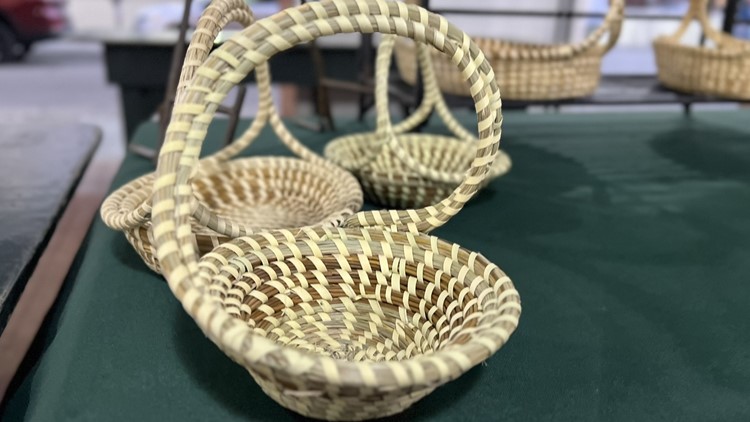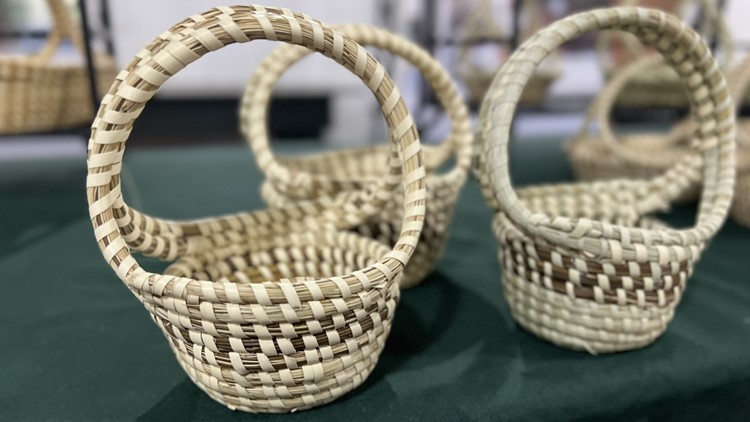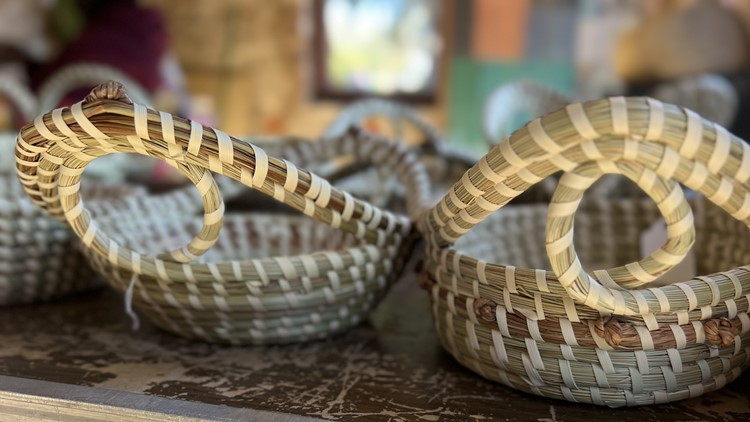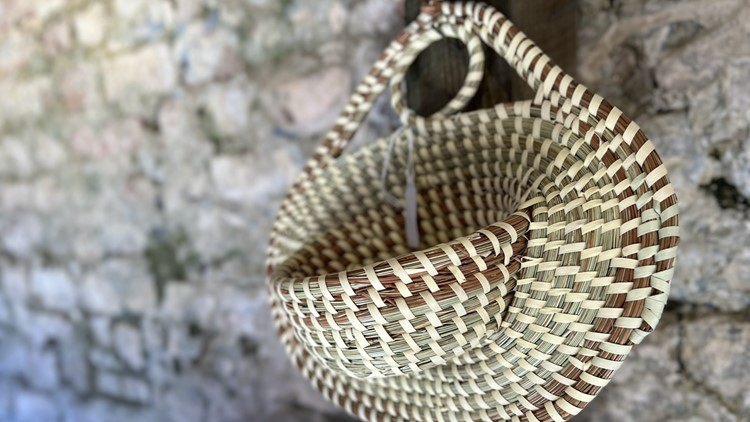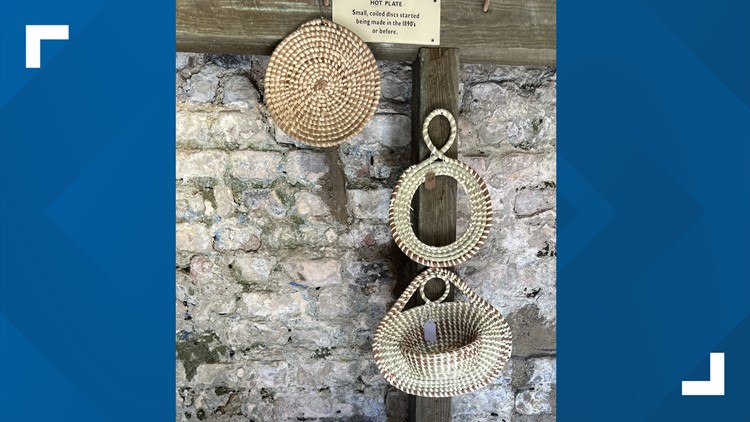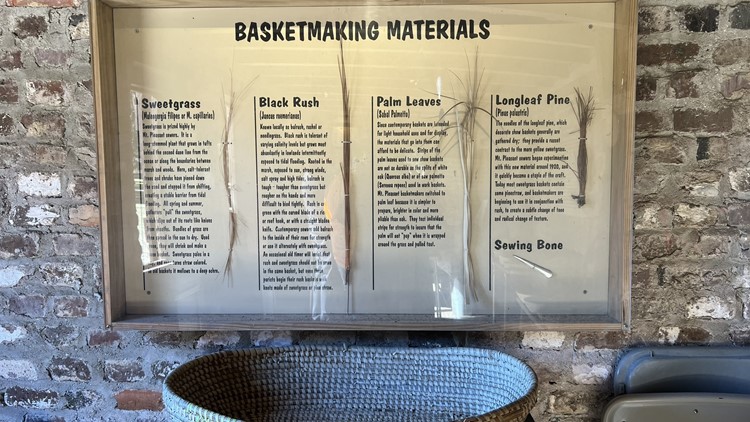CHARLESTON, S.C. — The Gullah Geechee community is an integral part of South Carolina. The Gullah are an African American group who live in the Lowcountry part of the Southeast, especially the Carolinas and the nearby Sea Islands. They have a shared language and a distinct African influence in every one of their customs.
Look at the history of these people and many came from Africa and were enslaved people. Their unique mother tongue is a creole-type language.
Most notably though, the Gullah folks near Charleston are known for their food, music and beautiful sweetgrass baskets.
Corey Alston works every day to keep the Gullah traditions and experience alive. He is a fifth-generation sweetgrass weaver, but he is also a Gullah expert, giving seminars and tours in South Carolina to show the link between now and then, the food heritage of the region and the sweetgrass art that is so special to Charleston.
I spent a full day with Alston, and we began at Page's Okra Grill in Mount Pleasant with one of the biggest breakfasts and the most Gullah breakfast I have ever seen.
"A lot of Gullah breakfast is based off the Gullah dinner. So, Chuck, as you had these dinners of pork chops and friend fish or some okra that was left over from the night before, the next morning, Big Mama would have had a bowl of grits to finish off whatever's left over the night before that became a lot of our staples and in hardcore meals because you don't throw nothing away. You don't know waste, right?" Alston said.
Right.

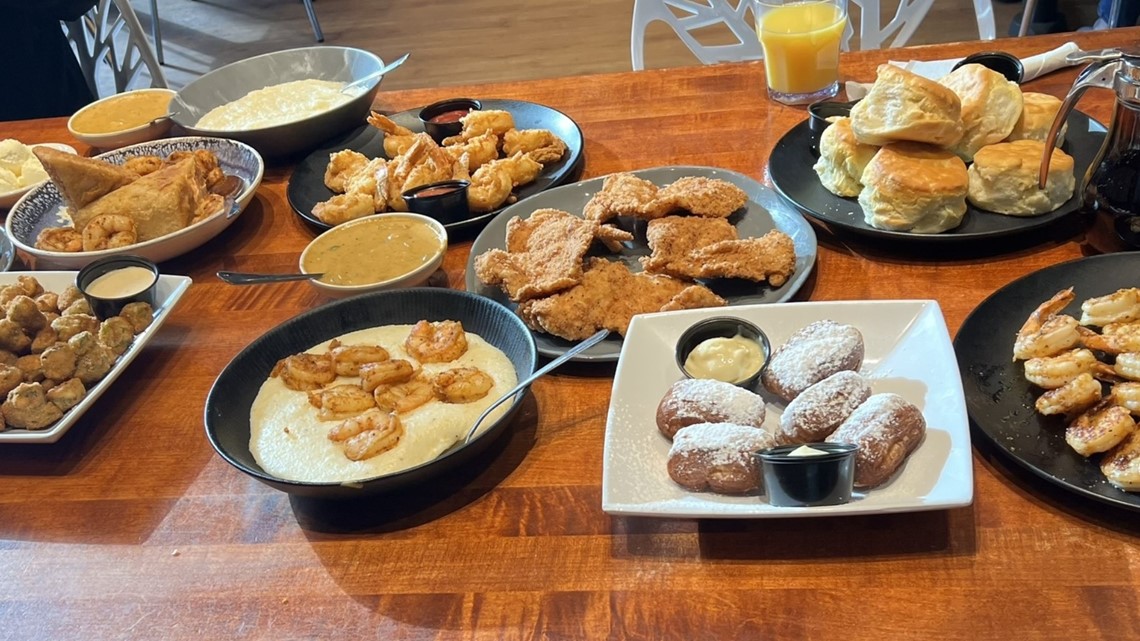
We enjoyed shrimp, fish, okra as well as waffles, biscuits and sweet tea. The staple though is fish. Even after slavery, it was important for Gullah people to, with limited incomes, take advantage of what was available, and seafood was and is readily available in South Carolina's coastline area.
Alston doesn't stop at food. He is a master sweetgrass weaver, and to find the best sweetgrass for baskets, he took us to some marshy land near Mount Pleasant.
"Right here is the real deal. This is what we use to make the basket. You look for length, so based off of this right here, and our sun dried is about 2-3 weeks," Alston said. "Once I sun dry that, then I can pull it into a sweet grass basket."
Finding the absolute right kind of sweetgrass is very important. Sweetgrass artisans will not weave with the grass until it is completely dry. It smells like hay.
There used to be acres and acres of sweetgrass nearby. Not so now.
"We have condos and shopping centers and restaurants around, but right now, we still have some, we can still harvest, but as those acres get more developed, we have less areas of harvesting," Alston said.
Chuck's Big Adventure in Charleston: Sweetgrass baskets
Alston took us to one of the most famous areas of Charleston, the highway sweetgrass stands, that in the 1930s sold to tourists. An industry was formed, and that industry survives today.
Our Gullah-Geechee tour of Charleston continued with a lunch at Hannibal’s, a soul food restaurant that works hard to celebrate the taste and the culture of the Lowcountry. We had it all, from seafood to collards, from okra to the main staple — rice. The Huger family started this kitchen in 1985, and since then, has been a soul food destination, both for regulars and tourists wanting to get a bite of Lowcountry deliciousness.

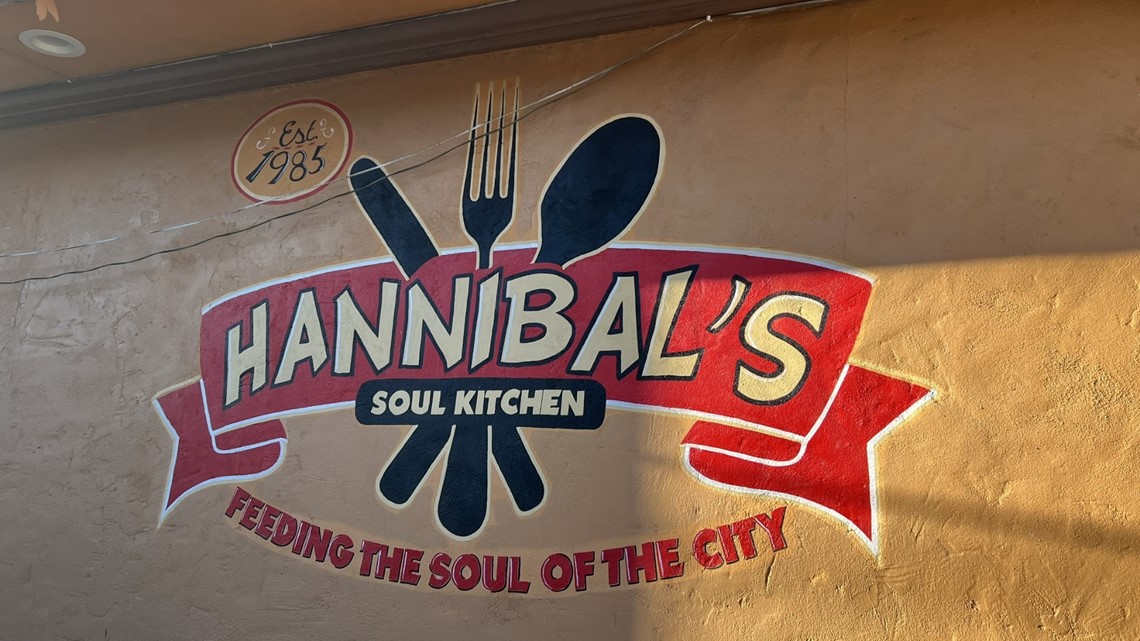
The folks who run this restaurant know there is a difference between slave food, soul food and cultural food. Alston explained:
“So, the difference in between the three is what we have here. So, what made slave food what it is was considered non-desired by whites. White folks did not eat the certain parts of the animal was then given those parts to the enslaved people. They ate those dishes. Moving forward, that's what was called slave's food. For example, slave food here would be the turkey wings, the leg quarters, that's considered slave food," Alston said. "The hog maw or the fatback that's in the collard greens, that's slave food. The reason why they called it that is because they didn't want those dishes, so they pushed that out to the enslaved people. They made the best out of those dishes. And now, that's what we call soul food because we made those dishes full of flavor.
"We flavor the collard greens, we flavor the lima beans. We then took that smothered turkey wing, made it into a dish, and now, we enjoy so much. What makes it cultural food? Gullah Geechee food is because we're still eating that as a culture. You only can find it here. You coming here for crab rice? You're not going nowhere else.
"You're coming here for okra soup. You know, you come here for bread pudding. So those dishes are now cultural foods. So, as you look at the difference in between slave food, soul food to cultural food, anything here in the Carolinas as close to the ocean, with seafood involved would fall under the Gullah Geechee lifestyle, like the crab rice or the fried whiting.
"We had that shrimp earlier. We had fried flounder earlier. Yeah, those would all be considered Gullah dishes.”

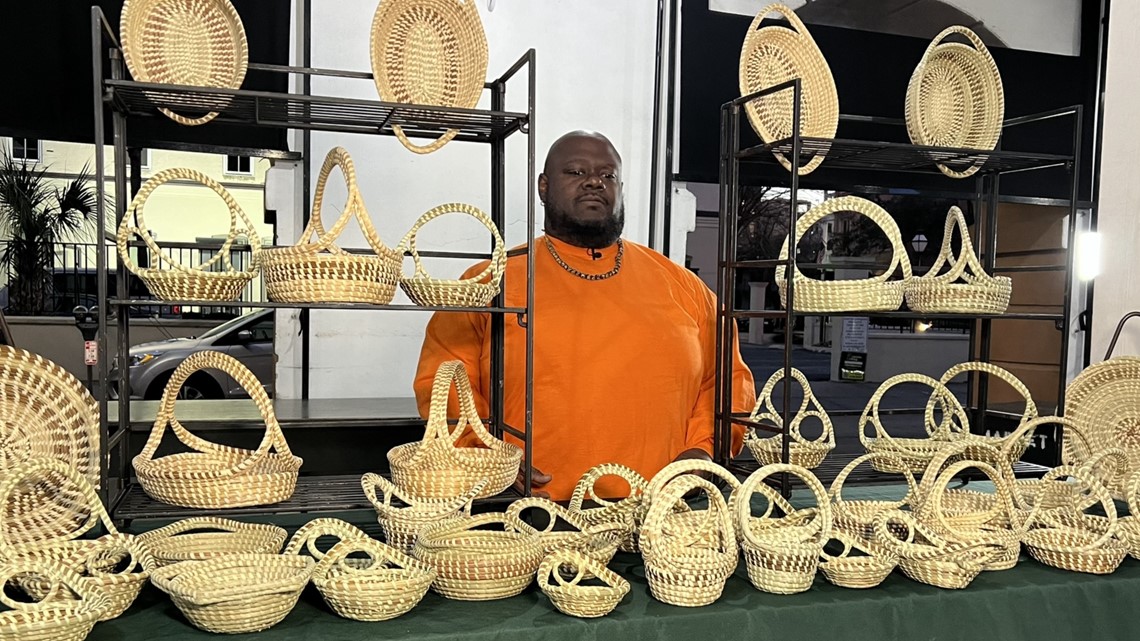
We also visited the world-famous Charleston Market, where sweetgrass artists still display their wares.
Alston said the market provided more than just an income.
"The market was erected in 1804. From my understanding, sweetgrass baskets, there has always been an opportunity of weaving to buy themselves out of enslavement. If you had a sort of skill art, you can do that art to raise funds, raise money and then buy yourself freedom, your family freedom," Alston said.
The baskets are certainly works of art, but on our tour of the area with Alston, I also learned that these baskets have to be functional. They have to be useful, and some people have used the same sweetgrass baskets in their families for generations.
We tried to take in as many sites as possible with Alston, spots that we needed to visit to understand the depth of the Gullah people and the whole spectrum of their cultural history.


To make it complete, we visited Boone Hall, a former plantation and farm where enslaved people lived harvesting indigo and other crops, raising families and transitioning from slavery into a different way of life. It was also here that in the slave quarters, we met Miss Delifine, a relative of Alston's who is continuing the age-old tradition of sweetgrass weaving, a way that folks in the 1860s, for instance, expressed themselves but also created a way to make an income. Alston explained:
“So we're here in a slave quarter on Boone Hall. And one of the things that Boone Hall has done is allow basket makers to still run their businesses here in the plantation. This is the Manigold family. Miss Delfine is the artisan here today. And what she has is a large variety of different designs that we're keeping alive traditionally.
"Some of the contemporary patterns would be more like jewelry of today. That's a modernized way of keeping the art alive. Some of these little smaller ones with the handles would also be more of a more modern take on it because if you visualize, days of enslavement will be based on working tools. Those working tools that have been functional tools dating back to the pattern of the breadbasket. The purpose of the breadbasket is to serve foods out of or, as we look further down here, we see that that one down there with the handle on it hanging on the wall can take on more of the idea of the rice fanning basket separating the rice.
"We spoke about the Palmetto tree. All this lighter grass is the main grass. That's the sweet grass. If you look over here, this is the biblical grass known as bull Rush. Moses we spoke about earlier, and Manigold’s material here. This is her palm fronds that she has stripped, and this is the raw sweet grass material.”

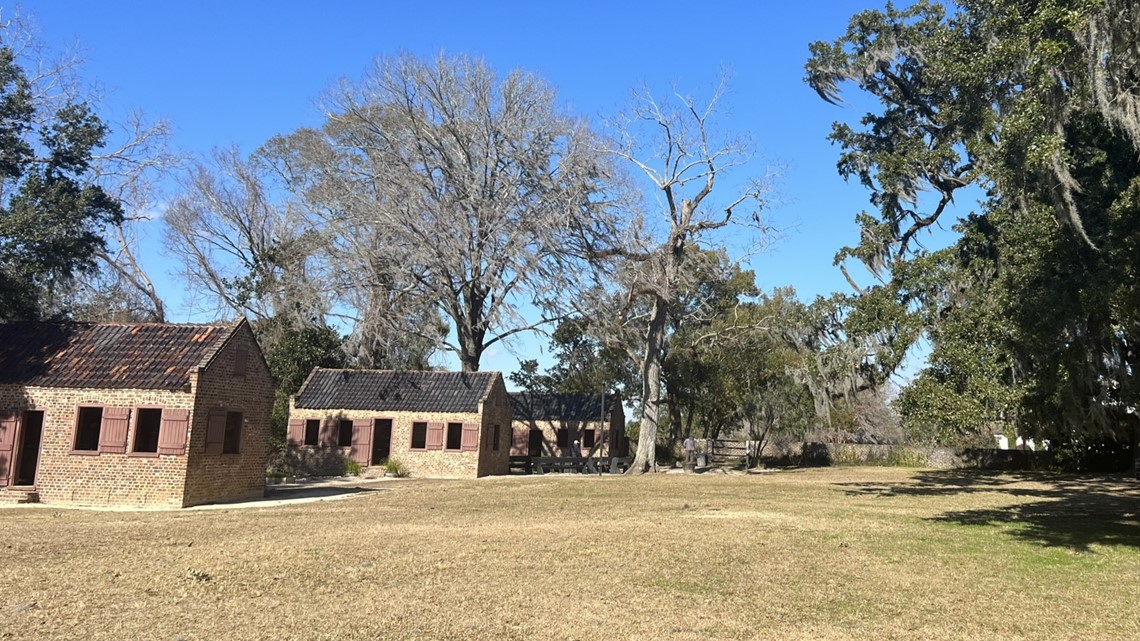
Guests here can talk with the artisans and hear their unique Gullah story. These sought-after sweetgrass baskets are also available for purchase here. In case you are wondering, prices range from $45 for a small basket to literally hundreds of dollars for a larger piece.

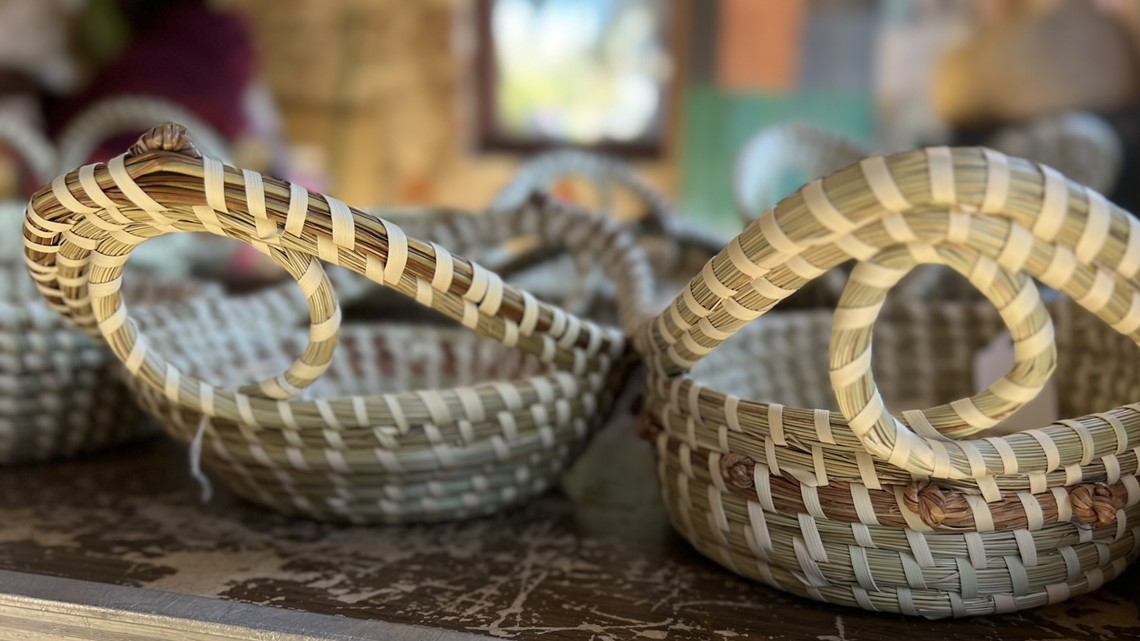
Alston is also an expert on the food, and boy, does he know where to eat!
We closed off our Gullah experience with more food, to be exact, whole hog BBQ.
Rodney Scott's Whole Hog BBQ is one of the most well-known establishments in the state and with good reason.
"James Beard Award winner Rodney has been known for doing such an awesome job and taking a whole hog barbecue theme to the next level," Alston said. "He is born and raised right here in Carolina from Hemmingway, and he brought his family into the Charleston area, got awards for making such a great whole hog. Nothing is wasted. From the hog perspective, we use the term, we eat it from the hooter to the tooter!"

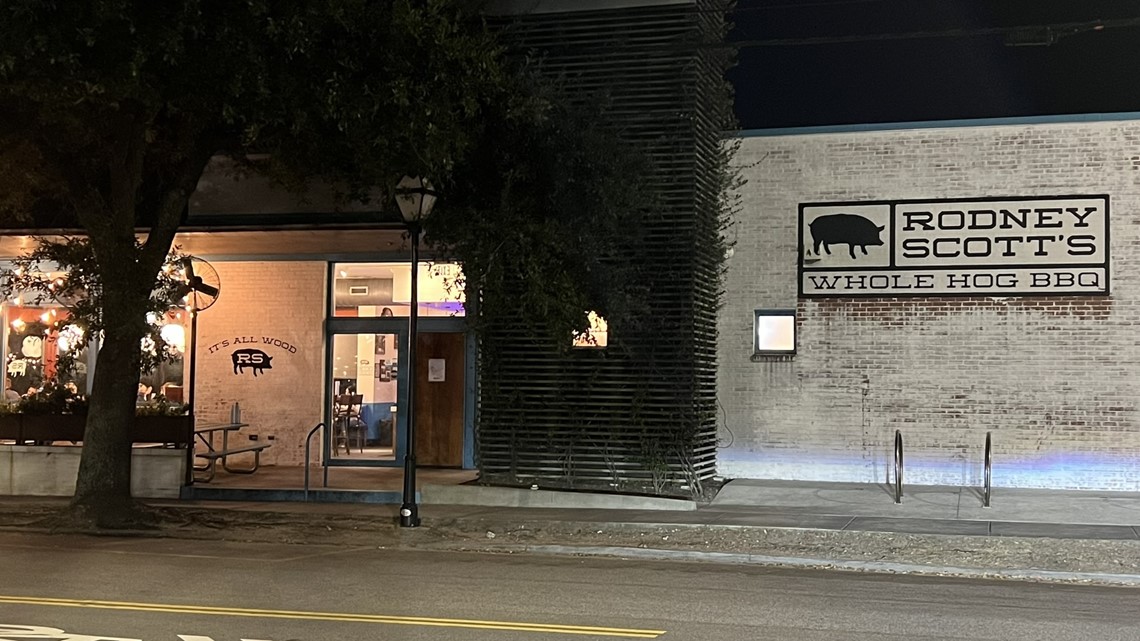
Alston took us back to the smoker where, true to his word, he showed us how everything was used and nothing was wasted. From ribs to pulled pork, cornbread to mac and cheese, brisket to burnt tips, Alston and our crew ate literally everything the restaurant had to offer and saw why these Gullah favorites have stood the test of time.
By the way, in this incredible nine days in Charleston, we had fantastic meals, but my favorite was Rodney Scott's BBQ.
Alston loves his Gullah culture, and spending a day with him, experiencing the stories, the history, the food and the sweetgrass, I learned to love it, too.
More of Chuck's Big Adventure in Charleston:
- Chuck's Big Adventure in Charleston: Old South Carriage Company
- Chuck's Big Adventure in Charleston: The Plantation Singers
- Chuck's Big Adventure in Charleston: Lowcountry Oyster Co. & cooking with Chef Kevin Mitchell
- Chuck's Big Adventure in Charleston: South Carolina Aquarium
- Chuck's Big Adventure in Charleston: Magnolia Plantation
- Chuck's Big Adventure in Charleston: Fort Sumter
- Chuck's Big Adventure in Charleston: Charleston Tea Garden
- Chuck's Big Adventure in Charleston: Southern fashion

